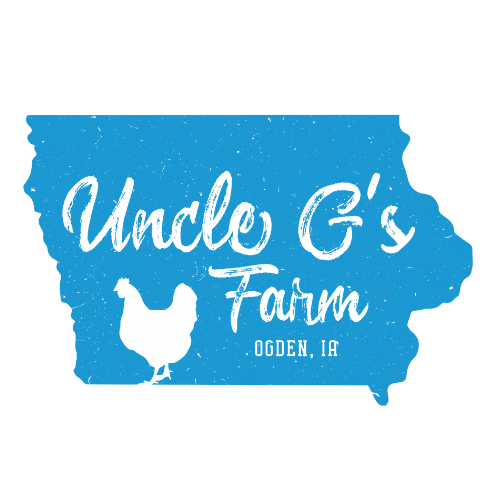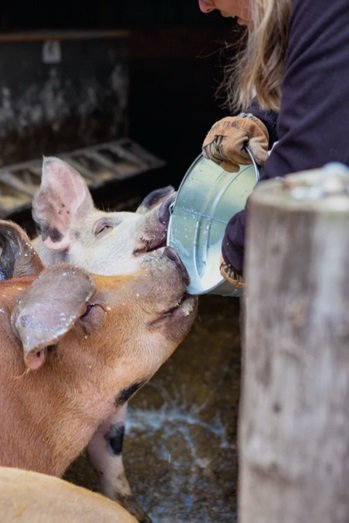feeding pigs on the cheap
Learning Experiences
One of our biggest learning experiences has been feeding our animals, especially our pigs. We have pigs in all areas of development in a climate with different seasons. All of these variables impact the needs of our pigs. Fortunately there is no shortage of specially formulated feed choices. Unfortunately they can get pretty pricey. The first thing you need to understand is the nutritional needs of your pigs. Different pigs need different things. For example growing pigs need more protein than pigs who have reached their target weight.
Very young piglets need extra lysine to help with growth. Another thing to assess is what your goal is. If your goal is to raise meat for yourself and you have time to allow slower growth, you can can be more flexible with your feed. If your goal is to raise pigs for market quickly, you might not have as much flexibility.
Trick #1:
Efficient feeders. We bought some used feeders off Craigslist to minimize waste. We started with rubber tubs, but they made a mess. These feeders help us cut down on waste by making it easy for the pigs to access, and they are heavy enough that they do not move around. We know how much feed goes in to the feeder and how long it should last.
Trick #2:
Measure the feed. If 50lbs is suppose to feed a pig for 10 days, only give 5lbs/day. If you give all 50lbs right away it will be gone in a few days. Our super high tech measuring system is a coffee can. We weighed out how full it needs to be for the # of lbs we want and marked it with a sharpie. Whatever works, right? If we are feeding the bigger feeders we just put the number of 50lb bags in that we want and that will tell us how long it should stay full. If they are going through way more food than we anticipate, we know we need to look more closely. Either their feeders are inefficient or something else is getting in to the feed.
Trick #3:
Supplement with other high quality foods. We have a dairy cow so we give extra milk. We also work with a local brewery to source spent grains. Our pigs get no more than 10% of their daily diet with wet distillers grains. While they are a great source of protein and other minerals, the balance is not ideal and needs to be just a supplement not a whole food. We also work with a local greenhouse to take all their scraps and feed them to the pigs. We do the same thing with pumpkins after Halloween. Our friends now know that we collect vegetable scraps so some of them will save them for us. Lucky pigs!
Trick #4:
Grind your own feed. One year we walked fields and collected corn that was too wet for equipment to harvest. We hand shucked all the corn (which was awful but free:) and stored it until it was ready to grind. We have also gone to the co-op and had them load bulk corn directly in the truck bed. I'm sure they think we've lost our minds. We buy bags of soy protein from another co-op and also a premix with measured vitamins and minerals. We use an old wood chipper and cement mixer to grind and mix feed. We only grind enough for about a week at a time since the feed starts to lose value as soon as its ground. Below is our handy chart that tells Uncle G how much of each component to put in the feed depending on the pig's developmental stage. Depending on the price of grain this may, or may not, make sense. You need to pull our your elementary math skills and work some story problems to determine this.
Trick #5:
Price lots of feed sources. We have three different places we go for feed. There is a co-op a few extra miles away that has cheaper lactation feed but their grower feed is not as cheap. So depending on what our needs are, we source from different places.






